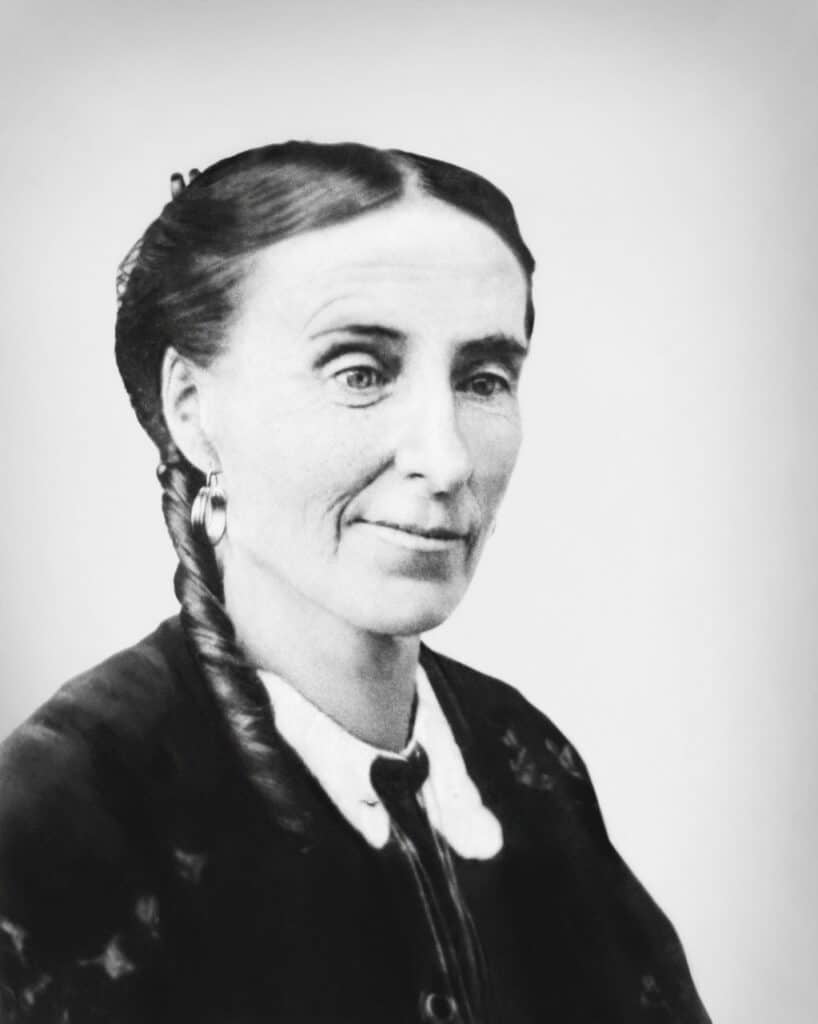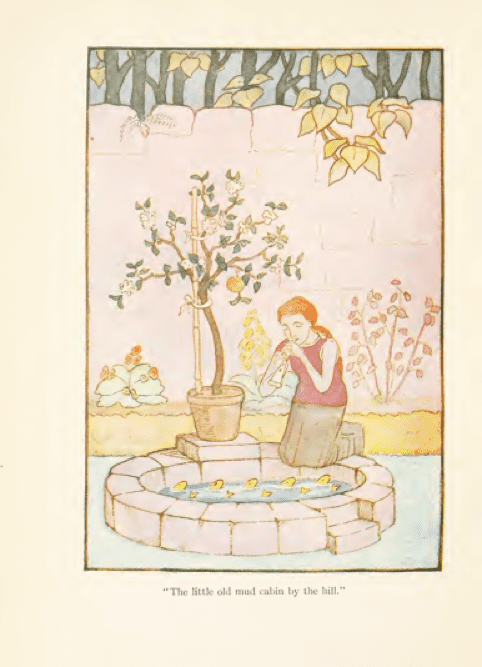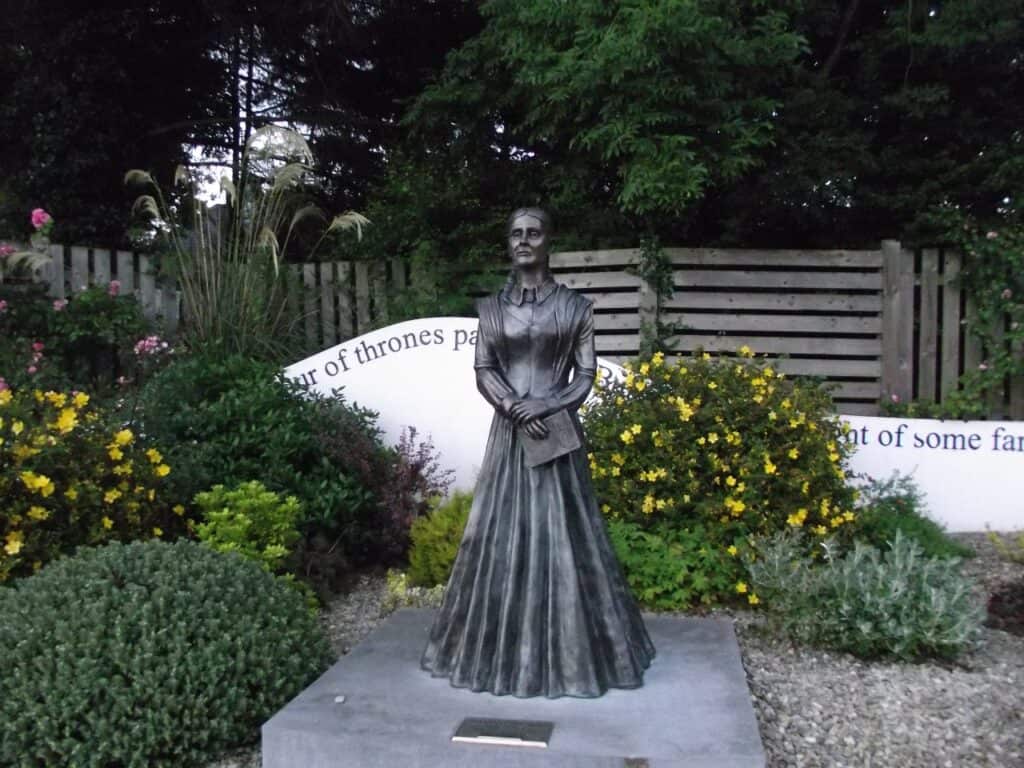Emerging Voices 2: Shirley-Anne Godfrey

Shirley-Anne Godfrey is an emerging Irish playwright, currently researching how drama and theatre can be used as methodologies in rehabilitating the literary legacies of Lady Augusta Gregory (1852-1932) and Frances Browne (1816-1879) for her PhD at NUI Galway. Funded by the Irish Research Council, Godfrey’s research findings have recently been published in a chapter on “Lady Gregory’s Grania (1912): Myth and Mythology” in David Clare, Fiona McDonagh, and Justine Nakase’s The Golden Thread: Irish Women Playwrights (Liverpool University Press, 2021). Based on her research into Browne, a prolific Donegal poet, novelist, and essayist, Godfrey has written a play titled In My Mind’s Eye, which was chosen for the Lyric Theatre Belfast’s New Playwright’s Programme 2018/2019. The play has had rehearsed readings at the Lyric Theatre as well as at the American Irish Historical Society.
This is the second interview in the emerging voices series which aims to showcase and promote the work of current doctoral students and/or early career researchers who are working in the field of Irish women’s writing in the period between 1880 and 1920.
Q: We’re intrigued by your PhD research into two Irish women writers, Frances Browne and Lady Gregory. Could you share with us what led you to diving into researching these two women writers?

Shirley-Anne Godfrey
SG: My academic research began with Lady Gregory, it was around the #wakingthefeminists moment, and being present at the Abbey Theatre on the 12th of November 2015crystallised for me the urgency of linking that moment with female voices from the past as well as the present. Frances Browne was born on the same street as me in Stranorlar, Co. Donegal, and we knew very little about her growing up. Writing a play about Frances Browne seemed an obvious way to celebrate her life and work. I was also fascinated by the fact that there had been far more plays “about” Gregory than “by” Gregory performed on the Abbey stage in recent times. From a playwriting point of view, I began to look at the plays and see what techniques writers had used to put her on stage. The motivation behind both endeavours was coming from the same place, a sense of wanting to do something to refocus attention on two women writers who were unduly neglected. My supervisor, Dr. Charlotte McIvor, was familiar with my interest in Frances Browne from my MA and helped me join the dots, and to realise that bringing both writers, and both elements of my work into dialogue was potentially fruitful.
Q: At first glance, one might find few points of connection between Browne and Gregory, born almost half a century apart and writing in different genres. Yet thinking outside the confines of literary periodisation and genre can yield fresh and creative insights. How do you approach your comparative study and what connects these two Irish women writers?
SG: Indeed, I was initially hesitant to connect the two writers, particularly since Browne was not a dramatist. For me the lightbulb moment of connection between the two was realising that not only had they been marginalised because of their gender, but also because of their complex heritages, ‘Ulster-Scots’ Presbyterian and ‘Anglo-Irish’ Anglican. Notions of Irishness (or non-Irishness) have negatively impacted Brown’s and Gregory’s legacies, because they did not belong to the “indigenous” Irish Catholic population. This cultural hybridity found expression in their experimentation with language and valorisation of the vernacular. In effect both pioneered a version of Irish-English, Gregory’s “Kiltartan” dialect, and Browne’s use of a dialect, a version of Ulster English, which is marked by Gaelic, Ulster Scots and possibly older English. Of course, the interest in fairy tales, legends and the supernatural in Browne’s work prefigures that of the Irish Literary Revival.

Frances Browne. Believed to be a “Carte de Visite” which were fashionable to swap in literary circles. Credit to Patrick Bonar.
Ironically, for Gregory and Browne, their very popularity became a means of justification for their exclusion from the canon: being prolific and writing across genres became negative markers. Both writers were discouraged by contemporaries and critics from experimenting with themes and forms. Critics had no difficulty with their writing for children – a genre which has historically held low status. Browne and Gregory, like many of their foremothers, used genres such as children’s literature and comedy in a subversive manner which can be read on a number of levels, evidencing traces of nascent proto-feminism in their work. The thesis explores canonicity and women’s writing, biographical theatre as a potential feminist methodology, the unique paradoxes and complexities of commemorating female writers in Ireland, and the role of language and identity.
Q: In recent years, Lady Gregory’s legacy for Irish theatre and her dramatic work have seen an encouraging flourishing of new activity, not the least thanks to #DruidGregory. As an Irish playwright and a director yourself, how are you approaching Gregory’s work in your doctoral thesis and have these recent developments brought up new questions for you?

Illustration by Margaret Gregory, Lady Gregory’s daughter-in-law, from The Golden Apple (1916) Muireann plays a tune for her brothers who have been turned into fish by the witch.
SG: I conducted two PaR (Practice as Research) interventions. In a Drama in Education format, primary school pupils performed scenes from Gregory’s children’s play The Golden Apple (1912) and discovered Gregory’s disappearance from the repertoire for themselves. Gregory’s dramaturgy had contemporary thematic resonances, was accessible and bore artistic experimentation, and gestures towards future praxis where participants can reconnect with their lost theatrical/literary heritage at a grass-roots level.I have written a radio play about Gregory, in which I consciously experiment with the form and trial feminist playwriting methods to contradict historical inaccuracies and to challenge narratives around Gregory. It is about broadening approaches to re-engaging audiences with Gregory’s work.
#DruidGregory was a fascinating event. The cultural performance of memory and its iteration in performative commemoration are entirely enmeshedin it.It was wonderful to see a live production of a Gregory play. The biggest question was why Tom Murphy and Noel O’ Donoghue’s On the Outside was on the programme, and why the touring elements to schools did not include a Gregory play. Watching Hyacinth Halvey made me think of Anton Chekov’s one act plays, something I had not considered previously. Seeing Marie Mullen in the iconic role of Kathleen ní Houlihan offered many layers, particularly playing both Kathleen and Lady Gregory. However, the image of Lady Gregory sweeping majestically among the audience, beckoning but not speaking is a troubling one, and reminds me of the unresolved cultural anxieties and uncertainties which surround Gregory.
Q: Your research into Gregory has, in fact, just been published in Volume 1 of The Golden Thread: Irish Women Playwrights. The editors David Clare, Fiona McDonagh and Justine Nakase have already talked to us about the origins and the scope of this landmark publication. In your chapter on ‘Lady Gregory’s Grania (1912): Myth and Mythology’, you examine and debunk estimations of Gregory’s work that ‘minimise her achievements’, bringing to light exciting new archival finds for hitherto unknown productions. Can you give our readers a flavour of how you read the (supposed) non-performance of Grania in relation to the wider politics of marginalising her work?
SG:It was taken as a given that Grania had never been performed, and it certainly has never been performed on the Abbey stage, which alone is an astonishing case of non-performance. I reread the play considering the politics around this lack of performance and the myths which were invented and perpetuated to explain it away. These were chiefly that Gregory was writing autobiographically in the play about an affair and supressed its production herself, that Gregory could only write comedy, that the themes – sexual passion and female agency- were not acceptable to the sensibilities of Irish audiences. Archival evidence shows that Grania was in fact performed with Gregory’s permission in Chicago (1912) and in Washington (1923). I see the non-performance of Grania as a metaphor for Gregory’s absence from the theatre she co-founded, and the evidence of its US performances as yet another link between Gregory and her playwriting descendants whose work is often more readily performed abroad than at home.
Q: Browne’s life and work inspired you to write the play Frances Browne: In My Mind’s Eye, which you directed for the #WakingTheFeministsWest play season in 2016. Could you tell us more about the evolution of this work and responses to the play?
SG: During my MA at NUI Galway I wrote a short play about Frances Browne’s childhood in a playwriting class led by playwright Tara Mc Kevitt. The first version (2016) of In My Mind’s Eye, was originally written to celebrate the bicentenary of Browne’s birth. The performances were received very warmly both by a Donegal and a Galway audience. The most striking feature was how it affected women in the audience. People responded emotionally to Frances’ predicament but mostly to her tenacity in pursuing her goals despite all of the difficulties. Naturally there was lots of interest in biographical details about Browne and her life, and some focus on whether this or that incident in the play really happened, etc. The use of dialect was commented on a lot and emerged as a feature. While I was on the Lyric Theatre’s New Playwright’s Programme (2018-19) under the guidance of Rebecca Mairs the play developed further and got very strong responses in Belfast and New York. Currently I am involved in the inaugural “Frances Browne Literary Festival” which will take place in Co. Donegal 7th – 9th October 2021. There will be a rehearsed reading of the final version of In My Mind’s Eye and a full production is in development. There will be a community theatre production of my dramatisation of Browne’s ghostly, folkloric tales –The Legends of Ulster. This adaptation was part of my PaR and was performed by NUI Galway students over Zoom in May 2021 as part of our ‘Women and the Canon festival of new work’.

Statue of Frances Browne in bronze, by Ciaran Patterson 2017, Stranorlar, Co. Donegal.
Q: The #WakingTheFeminists movement has undoubtedly resulted in new considerations of forgotten playwrights and theatre makers. To what extent has it shifted your own perspective towards your research as well as your work as a playwright?
SG: My perspective has shifted. I was teaching playwriting to undergraduates and it happened to be all female. The more I “taught” the traditional elements of playwriting the more I realised as playwright Sarah Ruhl suggests that our sense of the arc of a play is based on the male orgasm. It was so refreshing to hear undergraduates question the conventions and reach for their own. We looked at circles, patterns, suggestion, other ways in, non-naturalism. Students experimented with non-realistic approaches, bent genres and used their own local accents. As a researcher, I agree with Cathy Leeney’s comments that many male directors, critics, and academics dismiss experimentation as being a lack of familiarity with convention rather than intentional artistic decisions.
Q: What other women writers of the nineteenth and early twentieth centuries do you feel deserve more credit and critical attention in the Irish literary tradition, and why?
SG: There is a whole tranche of 19th century Irish-born women writers whose literary careers were primarily transacted in England, and who you are more likely to stumble upon in a history of English or British writers. I am uncomfortable with the barely veiled sectarianism in some descriptions of “Anglo-Irish” writers. This conflation of religion and class with nationality, and then finding writers wanting because they are too “posh” or too “Protestant” to be Irish, has not entirely disappeared. David Clare’s recent publication Irish Anglican Literature and Drama : Hybridity and Discord brings attention to writers like Elizabeth Griffith, Charlotte Brooke, Mary Balfour, and Lady Morgan.I am excited at the renewed interest and work around playwrights in the 20th century such as Teresa Deevy and Mary Manning, and perhaps even more interested in the earlier writers who appear in The Golden Thread.
Q: How do your multiple careers as playwright, director and academic meld with and inform each other? In other words, how has your research been informed, extended and guided by your writing and directing, and vice versa?
SG: I must add to that the labour of being a mother, particularly in the time of Covid. Compartmentalising the work I do into separate playwriting, academic and directing spheres is rarely a luxury I have! It is a case of necessity being the mother of invention: women have a great history of using what they have available to them at a given moment, trying even in limited ways to influence the spheres in which they work. My playwriting, research and academic writing are entirely interconnected. Instead of seeking new ways to convince the academy or the public or theatre programmers of the ‘worthiness’, ‘quality’ or ‘stageability’ of marginalised women writers, I am now more concerned with how researchers and practitioners could use the art form of drama itself as a research methodology to present and represent these artists (and non-dramatic texts) entirely in their own right, denying the authority of a canon, creating moments of encounter with writers and their work.
It is a developing mixture of approaches which I find fruitful and exciting but because it involves art it is unpredictable. I have intuited things about Browne’s life and work which entered the play and later found documentary evidence to back them up, e.g. Frances’ reluctance to apply for financial support from the Royal Literary Fund. The opposite is also true: Alexis Easley, for example, has demonstrated how Browne was adept at appealing to a vast and diverse readership, and that she courted and profited from being referred to as “The Blind Poetess of Ulster”. The academic agrees and I am indebted to Easley’s generous scholarship and sharing of resources, but the playwright chooses the opposite characterisation.



